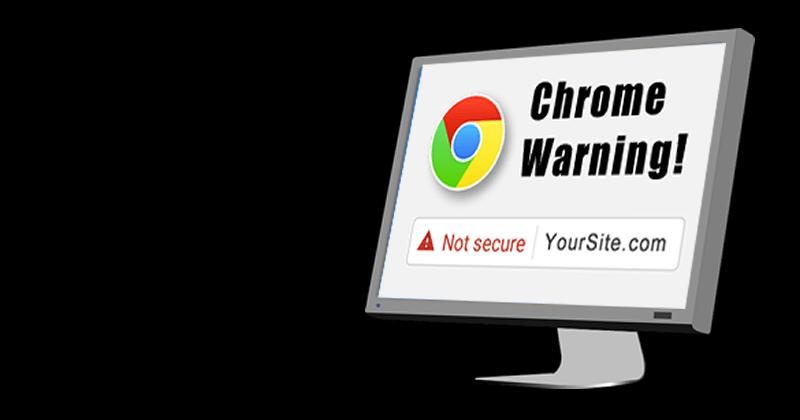Doing business on the web? Chrome 62 may push you to a secure server

Chrome 62 is coming. What does that mean for you?
In mid-August, Google Search Console sent out an email to every webmaster who collects email or credit card information on a non-secure HTTP page. That email was entitled “Chrome will show security warnings on [your website here]”. Most of us would’ve gotten this email, and we hope you’ve also shared it with your clients. Here’s what it looks like:

Why is Google doing this?
The whole idea, according to Google, is to help provide a more secure internet. In fact, they claim that “there has been a 23% reduction in the fraction of navigations to HTTP pages with password on credit card forms on desktop.” In plain English, they’re saying that fewer people are going to non-secure sites.
How important is Chrome (and this latest update) to my web visitors?
While we recommend you check your own Google Analytics numbers, we found between 33 and 65 per cent of our visitors are using Chrome. According to this article by ZDNet, Chrome is by far the most popular browser out there – and the other browsers don’t even come close.
So, then it becomes a question of, how quickly will your visitors install Chrome 62 after it’s released in October 2017?
While we can’t really know for certain, we can look at how quickly the last version of Chrome was adopted by users. Here’s how quickly Version 60 was adopted by some of our clients when it was released around June 27. The blue line shows the growth in Chrome adoption (orange line = full saturation):

Within three weeks, we saw a 50 to 90 per cent uptake of the new browser. In general, technical audiences adopted Version 60 quickly, whereas health and tourism website visitors tended to adopt more slowly.
Our research shows there will be a 90 per cent adoption rate of Chrome 62 after just three weeks.
That means by the time November 2017 rolls around, you can assume that all of the visitors to your website from Chrome (or at least 50 per cent of all visitors) will be getting the security warning.
How does the security warning impact your business and lead generation?
This could pose a fairly serious problem for online businesses that collect email addresses on non-secure sites. B2B lead generation sites should be particularly concerned if they haven’t yet moved to HTTPS.
We know visitors can be fickle about the kinds of information they give, and if the barrier to entry goes up with these non-secure warnings, then you can count on conversion rates being negatively impacted by lower form completion rates.
If you’re doing paid search, this means your cost per lead will go up and your other traffic sources, like organic traffic, will be less effective.
The animation below gives you an idea of what visitors to your site will see once they’re on Chrome 62. As you can imagine, anyone entering their contact information to, say, download a .PDF or sign up for email notifications might now think twice.

So, what do I need to do?
To avoid having Chrome display a warning message to your site’s visitors, you need to convert any HTTP pages used to gather data to HTTPS pages.
The good news? This is a straightforward process your internet provider can perform for you.
Can I do this myself?
Passionate about DIY? Technically inclined? Good! You can get your move to a secure server started with these HTTP setup guidelines.
What should I do next?
If you still have questions about the Chrome 62 update and the impact it will have on your websites, we’d be happy to give you recommendations on moving to a more secure https server.
